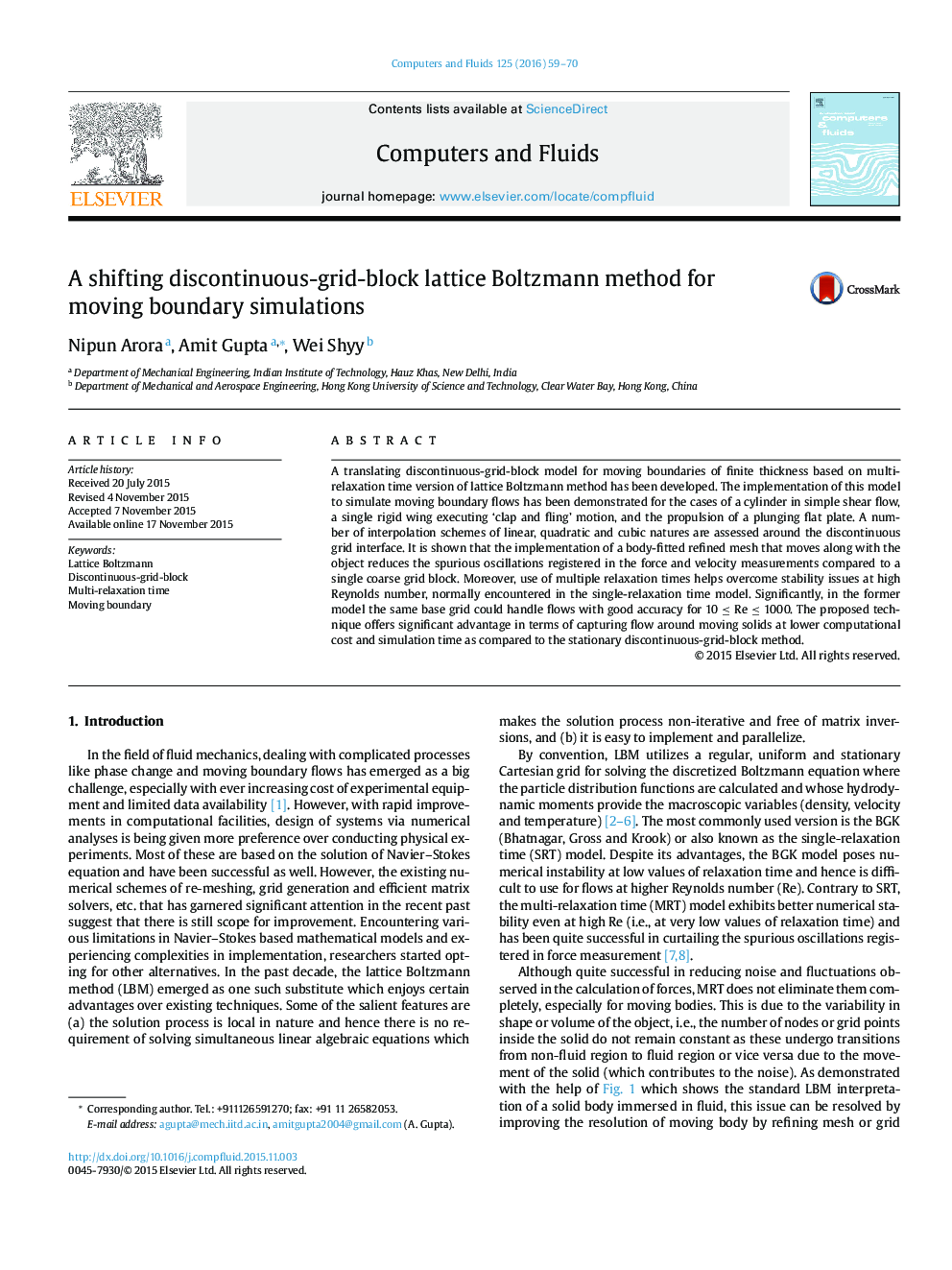| Article ID | Journal | Published Year | Pages | File Type |
|---|---|---|---|---|
| 761478 | Computers & Fluids | 2016 | 12 Pages |
•MRT LBM is used to develop a fine mesh block that translates along with the moving object.•The method is computationally economical than stationary discontinuous-grid-block.•It successfully curtails the spurious fluctuations as registered with single coarse block.•It overcomes the stability issues pertaining to grid resolution at high Re encountered by SRT.
A translating discontinuous-grid-block model for moving boundaries of finite thickness based on multi-relaxation time version of lattice Boltzmann method has been developed. The implementation of this model to simulate moving boundary flows has been demonstrated for the cases of a cylinder in simple shear flow, a single rigid wing executing ‘clap and fling’ motion, and the propulsion of a plunging flat plate. A number of interpolation schemes of linear, quadratic and cubic natures are assessed around the discontinuous grid interface. It is shown that the implementation of a body-fitted refined mesh that moves along with the object reduces the spurious oscillations registered in the force and velocity measurements compared to a single coarse grid block. Moreover, use of multiple relaxation times helps overcome stability issues at high Reynolds number, normally encountered in the single-relaxation time model. Significantly, in the former model the same base grid could handle flows with good accuracy for 10 ≤ Re ≤ 1000. The proposed technique offers significant advantage in terms of capturing flow around moving solids at lower computational cost and simulation time as compared to the stationary discontinuous-grid-block method.
